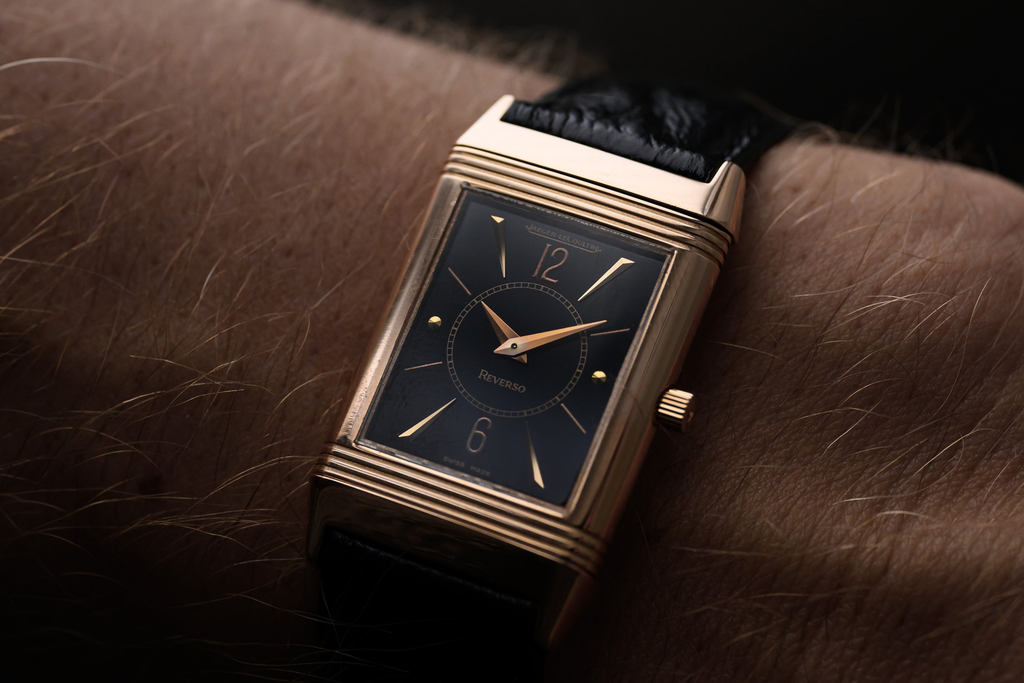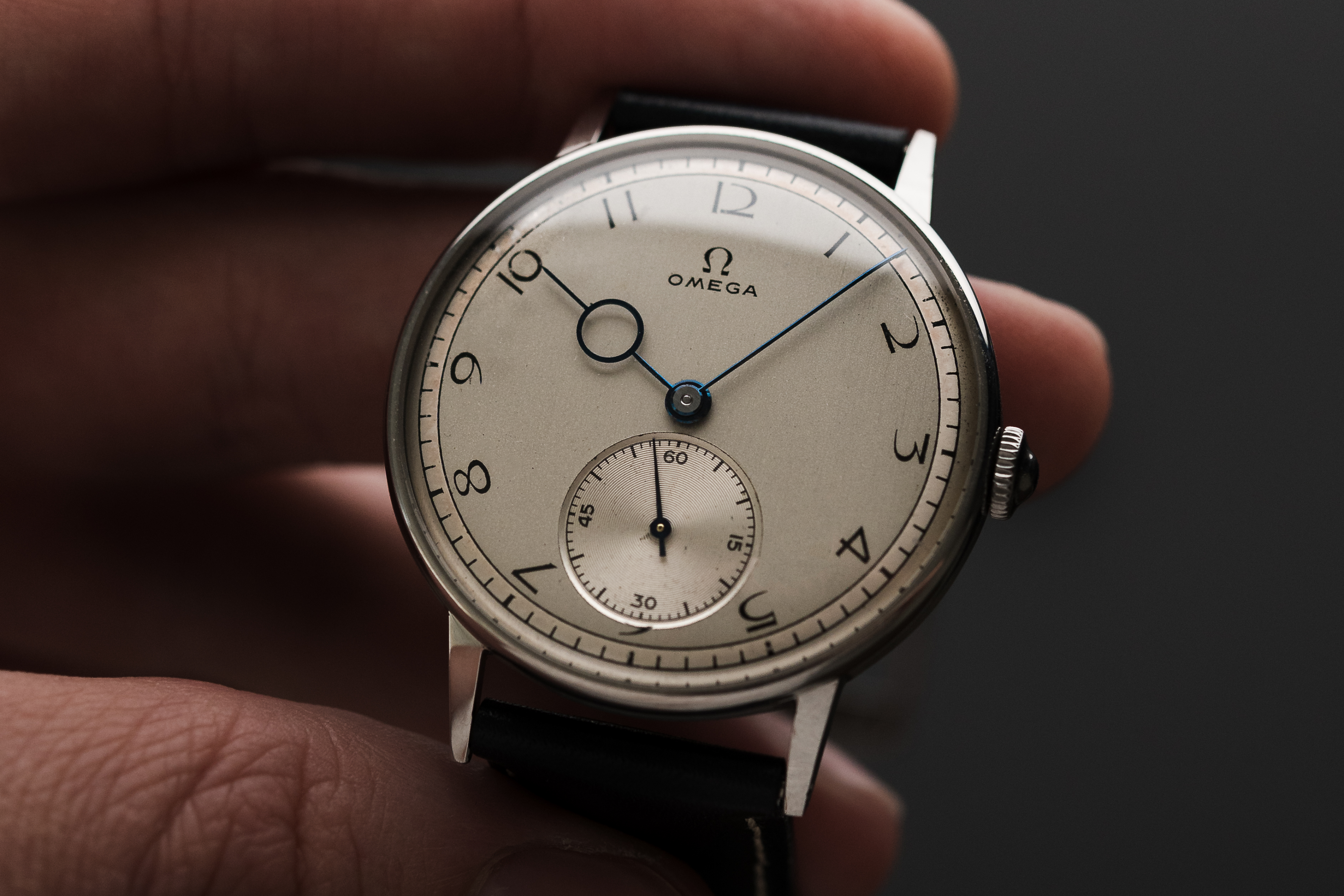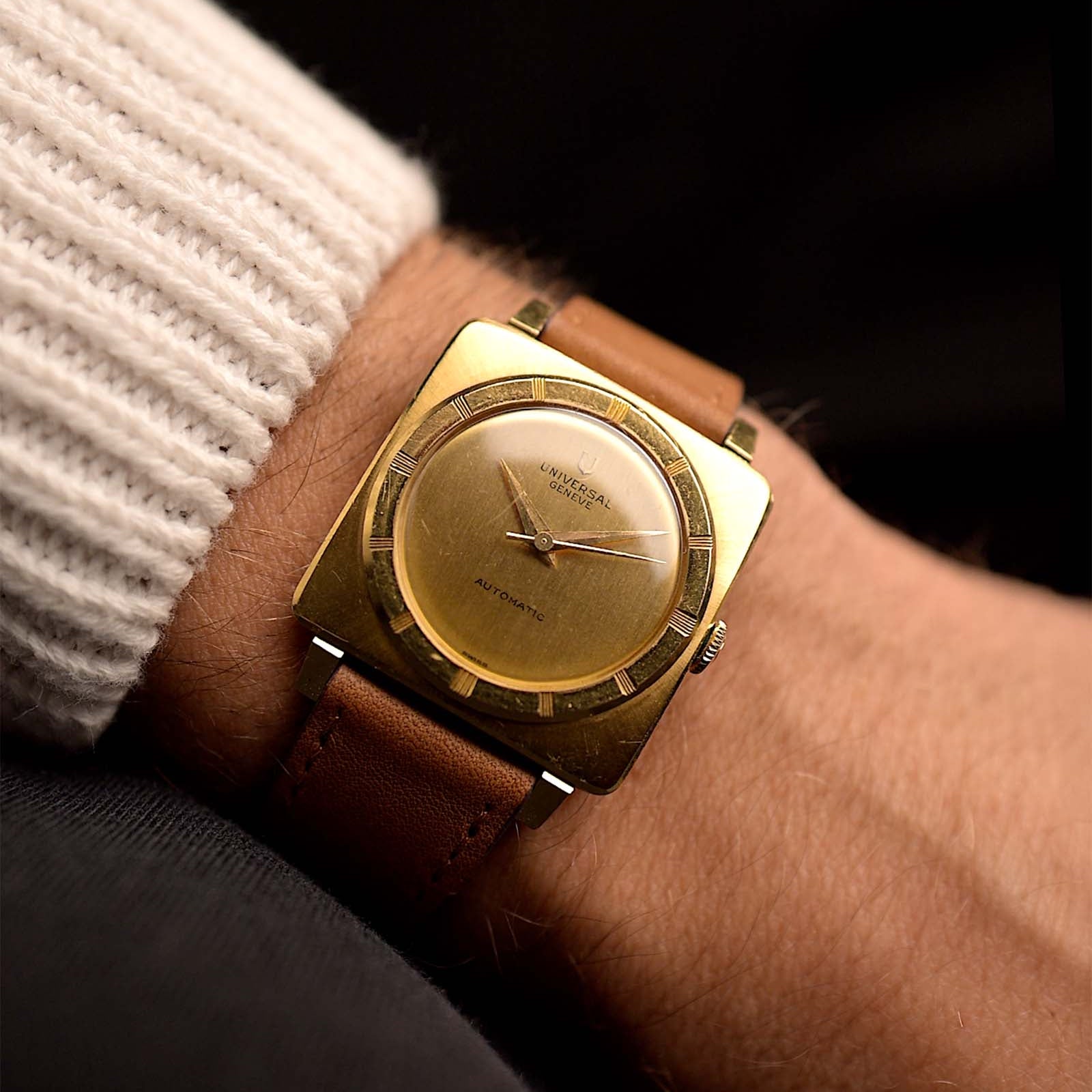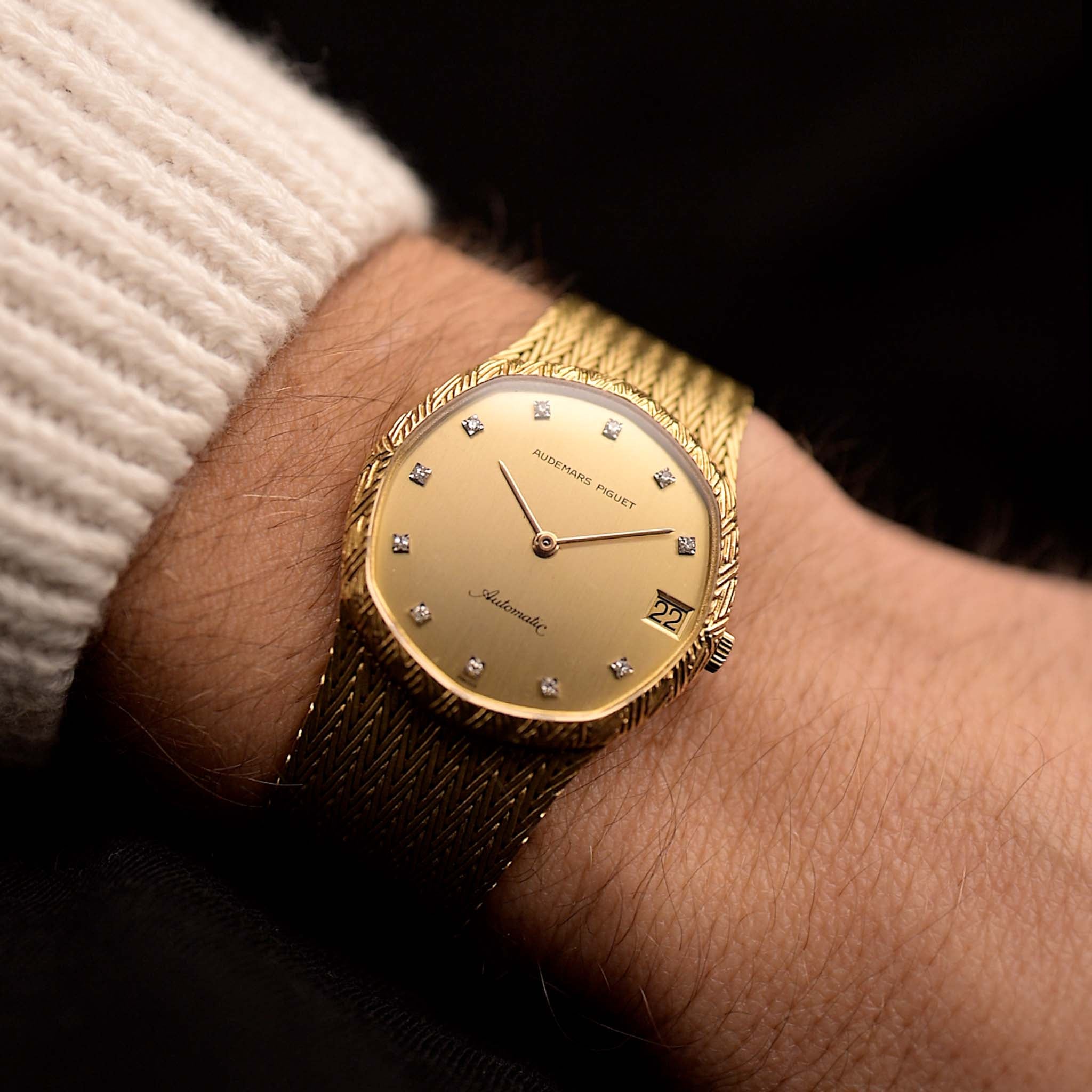Numerals and their layout are nowadays not really an important factor in watch design, so why bother? I argue it can grant us a better understanding of the evolution of watch design. How these little mechanical tools evolved was influenced by so many different factors and are thus evident in every aspect of the final product. I want to give you the holistic experience and take you on a journey through the entirety of the (vintage) watch world and as minuscule as the topic "numerals" might sound at first, it is, or rather was, an extremely relevant feature of the design and functionality of each timepiece.
February 07, 2023
A Watch Guide to Numerals - Types, Layouts & Evolutions

Marcus Siems @siemswatches
Collector, Author, Data Analyst
Stay with me It's the little details that can grant us a better understanding of the evolution of watch design. How these little mechanical tools evolved was influenced by so many different factors and are thus evident in every aspect of the final product. I want to give you the holistic experience and take you on a journey through the entirety of the (vintage) watch world and as minuscule as the topic "numerals" might sound at first, it is, or rather was, an extremely relevant feature of the design and functionality of each timepiece.
You might not consider "Numerals" an essential part of watch design but only because modern watches simply don't really show much variation. You will either find no numerals or a full numeral layout, not really anything in between. The most exotic numeral layout you might come across today is the Rolex Explorer 3-6-9 setting.
Yet historically numerals were an integral element of a timepieces dial and far from a minuscule detail. It can immediately express a certain vibe. So let me show you how much the appearance of any watch can change just by adapting the arrangement of numbers and hour markers.
1) Numeral Types
 Comparison of the most common numeral types - from left to right: Arabic (on a 1950s Jaeger-LeCoultre Memovox), Breguet (1920s Longines), Roman (1980s Rolex Datejust "Buckley" dial). Photos @goldammer.me.
Comparison of the most common numeral types - from left to right: Arabic (on a 1950s Jaeger-LeCoultre Memovox), Breguet (1920s Longines), Roman (1980s Rolex Datejust "Buckley" dial). Photos @goldammer.me.
Arabic Numerals
It's the classic numeral, based on the Western numerical system. It's by far the most common type.
Breguet Numerals
Technically Breguet numerals are Arabic numerals as well but historically this particular typeface has become an institution. The cursively written font can be found on several vintage pieces - some of the most coveted vintage Patek Philippe feature Breguet numerals - but the style was first presented by Abraham Louis Breguet himself[1-2]. Enameled Breguet dials featured this style since the late 1700s, and got its final, legendary shape around 1790.
Roman Numerals
Well a numerical system we all (at least I) got familiar with during our school time. The I - XII numerals of ancient origin can be found most prominently on Cartier's creations but are widely distributed by now.
 Other languages and styles - Chinese numerals (left, Cartier Tank Cintree Dual Time), and Eastern Arabic or Hindi numerals (right, Bulgari Octo Finissimo). Photos Courtesy of A Collected Man.
Other languages and styles - Chinese numerals (left, Cartier Tank Cintree Dual Time), and Eastern Arabic or Hindi numerals (right, Bulgari Octo Finissimo). Photos Courtesy of A Collected Man.
Chinese Numerals*
As the watch industry is opening to the Eastern Asian market, particularly China, several timepieces and limited editions by now feature Chinese numerals as well.
Eastern Arabic or Hindi Numerals*
These numerals are probably the origin of our modern decimal mathematics. This system originated in India and spread westwards into Europe and the Arabic world. Today these numerals often appear on Platinum Rolex Day-Date and Daytona models.
Historic Distribution
Now let's have a closer look how popular these numeral types were throughout the last century. Importantly, we can compare them against the polar opposite layout, namely having no numerals at all on the dial.
 Figure 1. Distribution of watch numeral types (none, Arabic, Roman, Breguet) from 1940-2000[3].
Figure 1. Distribution of watch numeral types (none, Arabic, Roman, Breguet) from 1940-2000[3].
Arguably, numerals are anyway a rather rare feature on modern dials. And as we can see this trend already started in the late 1950s. From the early 1960s to the late 1980s over 80% of all watches did not show a single numeral! A trend that has only slightly come down during the 1990s to about 70%.
Arabic numerals are through most of the last Century the most common type and particularly during the 1940s and 50s. This makes a lot of sense as during World War II most military watches were full (Arabic) numeral timepieces.
 The classic military style: full numerals, preferably lumed. It adds a technical/accurate flavor to any design ... and looks quite cool too. Like on this 1940s Omega Souveran with two-tone sector dial. Photo @goldammer.me.
The classic military style: full numerals, preferably lumed. It adds a technical/accurate flavor to any design ... and looks quite cool too. Like on this 1940s Omega Souveran with two-tone sector dial. Photo @goldammer.me.
Roman numerals show a small peak in popularity in the 1950s but start to really gain traction during the 1970s and 80s. From the early 70s to the late 90s this style was even more popular than their Arabic counterparts! And finally, Breguet numerals peak during the 1940s and appear to be generally quite rare, never eclipsing 10% popularity. It's the rarity that makes this style so desirable.
Discover our available Vintage Watches Collection >
2) Numeral Layout
When we speak about numerals on the dial, these numerals don't necessarily have to span over all twelve positions on the dial. A mixture of numerals and hour markers was a very common feature during the last Century. Next to a "full" layout numerals could span the even positions, the quarter (3-6-9-12), a 6-12 and even a 12-only layout. All of which might be necessitated by the overall design, but we'll come to that. Now how common are these different arrangements?
 Figure 2. Distribution of Numeral Layouts from 1940 to 2000[3]. We can clearly see that all layouts peak in the middle of the last Century, showing that this design detail is rather obsolete today.
Figure 2. Distribution of Numeral Layouts from 1940 to 2000[3]. We can clearly see that all layouts peak in the middle of the last Century, showing that this design detail is rather obsolete today.
There's a reason the right side of this plot is so empty... So to better understand the evolution of these arrangements we'll go through the numbers from most numerical to most abstract time representation... or in other words from full to less and less numbers displayed on the dial.
Full Layout
Distribution As we have mentioned before the full layout (numerals at every position) is most common during the war years showing peak popularity in the mid 1940s of over 70%. Due to the increased demand for no-numeral watches this dramatically declines to a low-point of around 5% during the 1960s. The second wave of the full numerals comes with the late 1970s with up to 25% share. As we've shown before that's mainly due to the fashionable Roman Numerals.
Examples Cartier Tank, Rolex Datejust Buckley dial, Jaeger-LeCoultre Reverso, F.P. Journe Chronometre Souverain
 The full layout is the most literal display of time... and also quite beautiful when it comes like this oversized 1940s IWC Hermet. Photo @goldammer.me.
The full layout is the most literal display of time... and also quite beautiful when it comes like this oversized 1940s IWC Hermet. Photo @goldammer.me.
Even Layout
Distribution The "even" layout, i.e. numerals at 2-4-6-8-10-12, was particularly common during the late 1940s with peak popularity around 16%. It is the style that naturally seems to follow the full layout. If you want to highlight artisanal hour markers while still keeping reading the time as simple as possible that's the compromise you'd go for.
Examples Cartier Asymetrique, Patek Philippe 1526, IWC Cal. 89 dress watch, Universal Geneve Uni-Compax
 The even layout is an intricate design. It oozes Artdeco while at the same time it bridges between literal and figurative markers of time. And with dagger indices like this pink on pink IWC cal. 83 with stepped lugs here it appears almost like the case is "clawing" the dial in its place. Photo @goldammer.me.
The even layout is an intricate design. It oozes Artdeco while at the same time it bridges between literal and figurative markers of time. And with dagger indices like this pink on pink IWC cal. 83 with stepped lugs here it appears almost like the case is "clawing" the dial in its place. Photo @goldammer.me.
Quarter Layout
Distribution The quarters - the 3-6-9-12 arrangement - is by far the most common layout after the full numerals. It peaks in the early 1950s with a popularity of about 25%. And it further is the only other layout, next to full, that seems to have a bit of a comeback in the late 1990s. This style has generally been very common with vintage Omega pieces of the time. Side note, I'd count Rolex's 3-6-9 layout into this category as well, as the missing 12 is basically due to putting the crown logo onto the dial.
Examples Jaeger-LeCoultre Triple Calendar Teardrop Lugs, Omega Seamaster 300, Rolex Explorer
 The beauty of the geometrical division of a watch dial best comes out with a quarter, i.e. 3-6-9-12, dial. Further, supported by the cross-hair on this 1950s Omega Constellation 2852 with Pie-Pan dial. Photo @goldammer.me.
The beauty of the geometrical division of a watch dial best comes out with a quarter, i.e. 3-6-9-12, dial. Further, supported by the cross-hair on this 1950s Omega Constellation 2852 with Pie-Pan dial. Photo @goldammer.me.
6-12 Layout
Distribution This very simplified numeral layout is never truly common but peaks at around 8% in the late 1940s and early 1950s. Interestingly, the 6-12 is most common with chronograph pieces - so basically it might be seen as a quarter layout where the chronograph sub-dials occlude the 3-9 numerals. But true 6-12 layouts, i.e. on time-only watches, do exist as well.
Examples Rolex 3668, Jaeger-LeCoultre Reverso, Universal Geneve Compax, Vacheron Constantin 6087
 The 6-12 might be most common with vintage chronograph pieces but might also appear on Neo-vintage pearls like this rosegolden 1990s Jaeger-LeCoultre Reverso. Do you see how it automatically elongates the dial appearance? Photo @goldammer.me.
The 6-12 might be most common with vintage chronograph pieces but might also appear on Neo-vintage pearls like this rosegolden 1990s Jaeger-LeCoultre Reverso. Do you see how it automatically elongates the dial appearance? Photo @goldammer.me.
12 Layout
Distribution This is by far the most simplified layout possible, it is only the number 12 at 12o'clock. As such it is more a symbol than really a literal help for reading the time properly. Nevertheless, it is a true design of the 1940s and early 1950s, peaking at around 7% popularity.
Examples Patek Philippe 1442, Vacheron Constantin 4621, 1960s Heuer Pre-Carrera
 The 12-only numeral layout, here on a stunning 1940s oversized Vacheron Constantin dress watch with Cornes-de-Vache lugs. Photo @goldammer.me.
The 12-only numeral layout, here on a stunning 1940s oversized Vacheron Constantin dress watch with Cornes-de-Vache lugs. Photo @goldammer.me.
3) Conclusion
Numbers on the dial are the most direct way of tracking the passing of time. It is also the simplest and most legible way of doing so. You don't have to think about it too much and ll the information is right there in front of you. And for several years that's been all that's been necessary.
That has been particularly true for military watches, pieces on which the displayed time might decide between life and death. But through in the middle of the 20th Century and after the time of the World Wars the time display did become more and more abstract. Less life depended upon it and watches became more fashionable.
 What's useful or necessary in watches strongly shifted over the last Century. From classic dress- to modern tool-watches and everything in between. Photo of a stunning 1950s Rolex Oyster with golden alpha hands and 3-6-9 numeral arrangement - the so-called "Explorer Dial". Photo @goldammer.me.
What's useful or necessary in watches strongly shifted over the last Century. From classic dress- to modern tool-watches and everything in between. Photo of a stunning 1950s Rolex Oyster with golden alpha hands and 3-6-9 numeral arrangement - the so-called "Explorer Dial". Photo @goldammer.me.
It's also been tradition that all numbers should be displayed. It went even so far that during the early 20th Century, with the appearance of the first wristwatches and the crown moving from 12 to 3o'clock, the number 12 often came in red font to prevent misreading the time[4].
But time passed and wristwatches became more common such that the convention to display numerals at each hour was broken up more and more. What we can clearly see in the data is that people's taste transitioned from a full layout in the 1940s to an "empty" numeral layout in just a little under 20 years later.
 True dial complexity comes with the combination of numerals and hour markers. The dial landscape can become adventurous terrain and starts to draw you in each time you look at it. Just inhale the combination of the quarter numeral layout with dagger and circular hour markers. Magnificent. Photo @goldammer.me.
True dial complexity comes with the combination of numerals and hour markers. The dial landscape can become adventurous terrain and starts to draw you in each time you look at it. Just inhale the combination of the quarter numeral layout with dagger and circular hour markers. Magnificent. Photo @goldammer.me.
A last side note may be allowed here... An interesting factor in this development comes to light when we look into how this design detail was used at different brands. I already mentioned the Omega quarter geometry, a very distinct feature of the brand. On the other hand timepieces from the holy trinity - of Patek Philippe, Audemars Piguet and Vacheron Constantin - from the same time period indeed show a gradual transition and a large variety of arrangements.
Yet what this transition painfully indicates is that a complex interplay between numerals and hour markers hasn't been around since 1960 and thus appears to be a long lost virtue. It is simply not a factor in modern watch design anymore. And that's a pity... Or simply another reason why going vintage just makes perfect sense!
Discover our available Vintage Watches Collection >
* I could not find enough data to draw conclusions about the distribution of these styles. Those are thus left out from the quantitative approach.
References
[1] Breguet Numerals, When Indexes Make A Difference; Lorenzo R., Italian Watch Spotter;
https://italianwatchspotter.com/breguet-numerals
[2] The Watch Face: Numerals; Adrian Hailwood, Revolution Watches;
https://revolutionwatch.com/the-watch-dial-numerals/
[3] Watches from Chrono24, extracted 2020 Nov. 29th; Karlsruhe, Germany;
[4] Red and Blue 12s on Watch Dials; David Boettcher, Vintage Watchstraps
https://www.vintagewatchstraps.com/red12.php
All Rights on the text and graphics reserved to the Author.




























Leave a comment